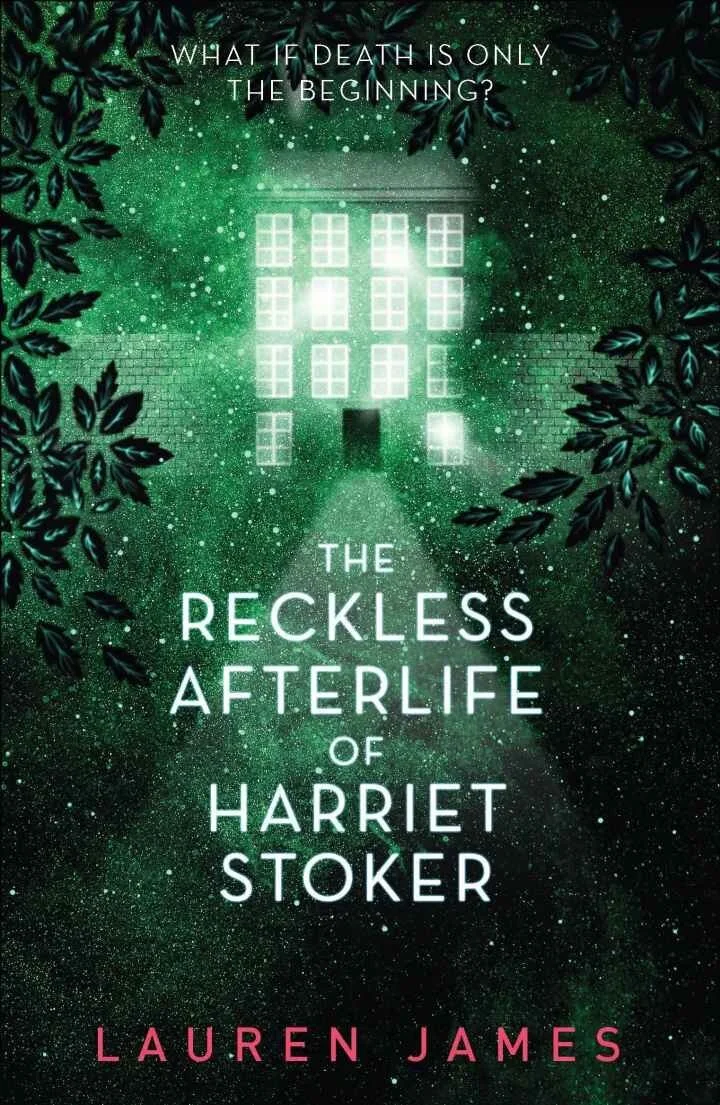An Interview with Lauren James, Author of The Reckless Afterlife of Harriet Stoker
(This book was very kindly gifted to me by Walker Books, but all opinions are my own)
The Reckless Afterlife of Harriet Stoker is one of my most highly anticipated reads of the year. Not only is it written by the wonderful UKYA writer Lauren James, but it’s also her first fantasy book and features a gang of magical, 18-year-old ghosts.
A huge thanks to all of you who submitted your burning questions for Lauren to answer over on my Instagram - read on to hear all the juicy details about her new book. Enjoy!
Ok first question: can you tell me a bit about your new book?
The Reckless Afterlife of Harriet Stoker is my first fantasy novel, about a girl who gets in above her head when she tries to become the most powerful ghost in a building of ancient spirits. The other ghosts happen to be freshers who all died in their halls of residence during their first year of uni, decades earlier. They’ve spent years bickering, flirting, play-fighting and developing in-jokes with each other in the decrepit and abandoned building where they all died. When Harriet arrives, things start to go badly wrong…
What inspired you to write a story about ghosts and magical powers?
I really wanted to write about a villainous girl. One of the big things that surprised me when I was first published was how unforgiving reviewers were of female characters – people didn’t like it when they did anything wrong! They were seen as very unlikeable and mean if they made mistakes, which isn’t something we see for male characters. Once I started reading about different ghost myths from around the world, I thought it would be a fun setting to use for my anti-hero, as she explores the world of the afterlife and gets herself into trouble of various kinds.
My sci-fi is always heavily based on rules and real science, so when I started thinking about the world of ghosts, I naturally gravitated towards thinking about how ghosts might work scientifically. Everything has to have an energy source, and ghosts would no exception. The world expanded from there, as I tried to work out how that might shape a society where there is one valuable resource – the energy that keeps spirits together. If you can get enough energy, there’s no limit to how long a ghost can survive, which means the oldest ghosts are the most powerful, as they’ve had many centuries to take and retain that energy. It gets quite dark, as Harriet learns how far they’ve gone to achieve that.
Do you believe in ghosts?
No, but my family does have some old stories about my great-granddad appearing as a ghost after his death – though I’m not sure how much that was due to gas leak hallucinations! I tend to look for the scientific explanations behind things, so I’m very interested in the phenomenon of ghosts and what the collective stories we’ve created as a society say about our culture.
Did writing about the afterlife make you feel uncomfortable, or is it a topic that you love exploring?
I loved it! Especially because I could mix teenagers from two time periods – the 1990s and 2020 – which is a real collision of generations in a fun way. It was very nostalgic to write.
Lots of your stories feature young women in science. Is that something that you’ve included in this book?
I studied Chemistry and Physics, so it’s always been important to represent realistic, flawed female scientists in my books – I’ve had biologists, computer scientists, mechanical engineers and mathematicians. It was a bit more difficult this time around, since all my characters are dead, but I added a scientist called Qi, who was studying for her PhD when she died, and now runs experiments on ghost energies. It was an interesting experiment in the science behind the magic of my idea.
What are three fun facts about Harriet Stoker?
The novel has a mysterious omniscient narrator telling the story to the reader, whose identity is a secret – it’s up to you to work out who they are!
There is a queer enemies-to-lovers romance which was the most fun to write
The story takes place over two thousand years – ghosts can survive for a long time. Like, a really long time.
Are there any characters that you really relate to?
Probably Rima, for all of the reasons listed above! I also really enjoyed writing Harriet’s descent into immorality – there’s something really satisfying about a female character whose goals are more important to her than being liked. She’s willing to be rejected from society to make herself happy, and values her own judgement above anyone else’s viewpoint. That takes a kind of selfishness that is really interesting to me.
Which is your favourite character in the book?
I hate this question, because I love them all! But I have a soft spot for Rima – she’s laidback, playful, bad at telling jokes and the ‘mum friend’ who always wants to look after everyone else.
One of the things that I love about your books is that the plots have so many great twists and turns! I want to ask A) is this something that you’ve continued with in this book, and B) is writing these twisty plot lines a conscious part of your writing process?
Some of the smaller twists in my books are planned from the beginning, but as I edit the novels, I usually add in some more along the way! I get bored easily, and learn a lot about writing between rounds of editing, so I try to push the story as much as I can each time I return to it.
Adding twists is a way to take risks and stretch the narrative in ways I wouldn’t have been brave enough to do otherwise (particularly in regard to the characters’ backstories). It takes a lot of planning in advance. While writing, I tend to think about my novels in several strands:
1) what the reader knows about what’s happening
2) what the characters know about what’s happening (but aren’t necessarily saying)
3) what is really happening
I then pace out reveals about the truth alongside character development. Ideally, readers will guess twists about 10 pages before the characters realise the truth – I try to give enough clues that it’s possible to work it out if you’re a close reader. I don’t think it’s fair, otherwise. If anyone wants a clue for HARRIET: keep an eye on the knitting.
Name some of your favourite books that feature girls in STEM.
I have a whole Goodreads shelf for this, but some of my recent favourites are Blood Moon by Lucy Cuthew, Under a Dancing Star by Laura Wood, The Sweetness at the Bottom of the Pie by Alan Bradley and Sourdough by Robin Sloan.
Do you have any advice for young people (women in particular) who want to pursue a career in science?
I think it’s hugely important for teenagers to realise that you don’t have to be a genius to study science. I talk to a lot of teenagers about science, and hear a huge amount of enthusiasm. But it's hard to see that progressing to the university level in admission numbers. Scientists in the media are often represented as geniuses and I think it’s a hugely damaging stereotype which might deter people from studying science. But if you have enthusiasm, you are good enough for science!
And finally, lots of my followers are aspiring authors, do you have any top tips for them on their writing journey?
Writing advice is always “write every day”. I think that’s wrong. The real trick is to read every day. Even if it’s only for a few minutes. You need to be constantly filling your brain with sentences and plots, to fill up your mental bank of ideas. Then you’ll have something to write about, by stealing all the best bits of your favourite books. That’s the real secret to writing.
The Secret Afterlife of Harriet Stoker is out now and available to purchase online and in all good bookshops. Thanks so much to Lauren for telling us more about her wonderful new book!
More Blog Posts
An Interview with Alice Oseman
An interview with Fiona Thomas, author of Depression in a Digital Age

